Zhengyou Zhang
Compliance while resisting: a shear-thickening fluid controller for physical human-robot interaction
Feb 03, 2025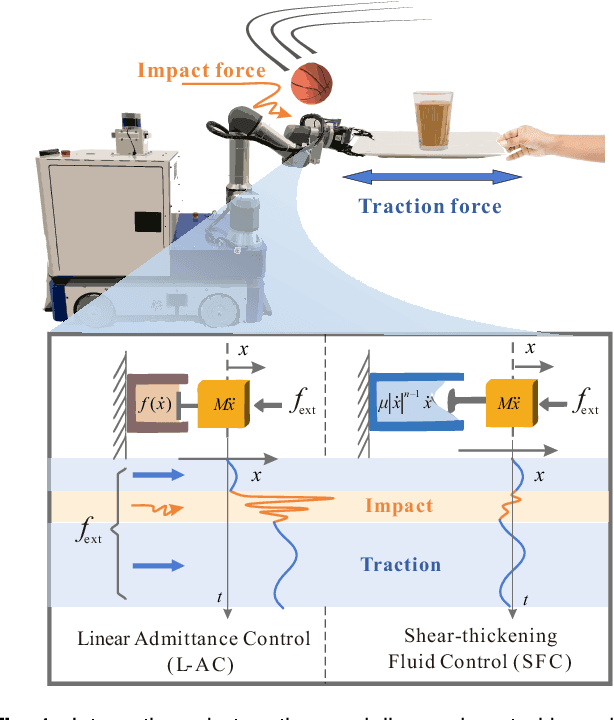
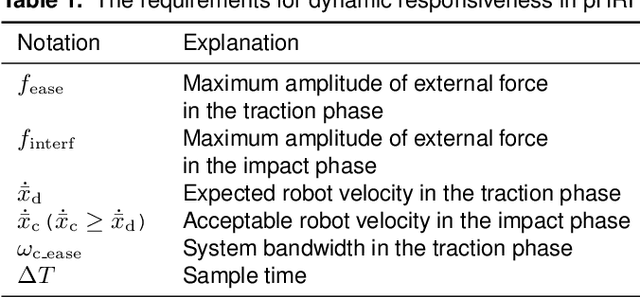
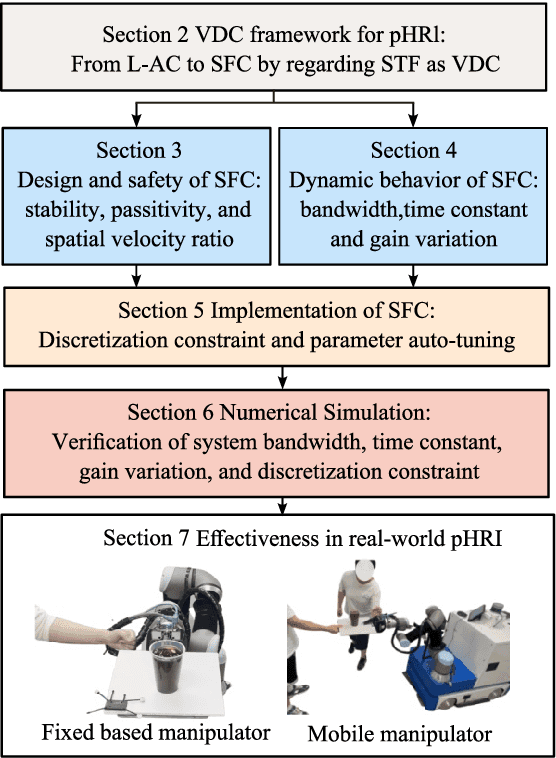
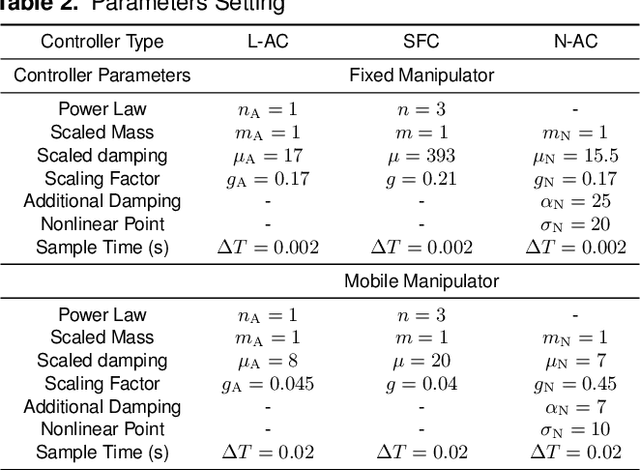
Abstract:Physical human-robot interaction (pHRI) is widely needed in many fields, such as industrial manipulation, home services, and medical rehabilitation, and puts higher demands on the safety of robots. Due to the uncertainty of the working environment, the pHRI may receive unexpected impact interference, which affects the safety and smoothness of the task execution. The commonly used linear admittance control (L-AC) can cope well with high-frequency small-amplitude noise, but for medium-frequency high-intensity impact, the effect is not as good. Inspired by the solid-liquid phase change nature of shear-thickening fluid, we propose a Shear-thickening Fluid Control (SFC) that can achieve both an easy human-robot collaboration and resistance to impact interference. The SFC's stability, passivity, and phase trajectory are analyzed in detail, the frequency and time domain properties are quantified, and parameter constraints in discrete control and coupled stability conditions are provided. We conducted simulations to compare the frequency and time domain characteristics of L-AC, nonlinear admittance controller (N-AC), and SFC, and validated their dynamic properties. In real-world experiments, we compared the performance of L-AC, N-AC, and SFC in both fixed and mobile manipulators. L-AC exhibits weak resistance to impact. N-AC can resist moderate impacts but not high-intensity ones, and may exhibit self-excited oscillations. In contrast, SFC demonstrated superior impact resistance and maintained stable collaboration, enhancing comfort in cooperative water delivery tasks. Additionally, a case study was conducted in a factory setting, further affirming the SFC's capability in facilitating human-robot collaborative manipulation and underscoring its potential in industrial applications.
Whole-Body Impedance Coordinative Control of Wheel-Legged Robot on Uncertain Terrain
Nov 15, 2024



Abstract:This article propose a whole-body impedance coordinative control framework for a wheel-legged humanoid robot to achieve adaptability on complex terrains while maintaining robot upper body stability. The framework contains a bi-level control strategy. The outer level is a variable damping impedance controller, which optimizes the damping parameters to ensure the stability of the upper body while holding an object. The inner level employs Whole-Body Control (WBC) optimization that integrates real-time terrain estimation based on wheel-foot position and force data. It generates motor torques while accounting for dynamic constraints, joint limits,friction cones, real-time terrain updates, and a model-free friction compensation strategy. The proposed whole-body coordinative control method has been tested on a recently developed quadruped humanoid robot. The results demonstrate that the proposed algorithm effectively controls the robot, maintaining upper body stability to successfully complete a water-carrying task while adapting to varying terrains.
RiskAwareBench: Towards Evaluating Physical Risk Awareness for High-level Planning of LLM-based Embodied Agents
Aug 08, 2024



Abstract:The integration of large language models (LLMs) into robotics significantly enhances the capabilities of embodied agents in understanding and executing complex natural language instructions. However, the unmitigated deployment of LLM-based embodied systems in real-world environments may pose potential physical risks, such as property damage and personal injury. Existing security benchmarks for LLMs overlook risk awareness for LLM-based embodied agents. To address this gap, we propose RiskAwareBench, an automated framework designed to assess physical risks awareness in LLM-based embodied agents. RiskAwareBench consists of four modules: safety tips generation, risky scene generation, plan generation, and evaluation, enabling comprehensive risk assessment with minimal manual intervention. Utilizing this framework, we compile the PhysicalRisk dataset, encompassing diverse scenarios with associated safety tips, observations, and instructions. Extensive experiments reveal that most LLMs exhibit insufficient physical risk awareness, and baseline risk mitigation strategies yield limited enhancement, which emphasizes the urgency and cruciality of improving risk awareness in LLM-based embodied agents in the future.
TencentLLMEval: A Hierarchical Evaluation of Real-World Capabilities for Human-Aligned LLMs
Nov 09, 2023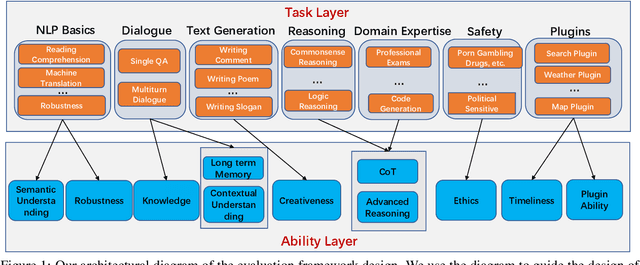



Abstract:Large language models (LLMs) have shown impressive capabilities across various natural language tasks. However, evaluating their alignment with human preferences remains a challenge. To this end, we propose a comprehensive human evaluation framework to assess LLMs' proficiency in following instructions on diverse real-world tasks. We construct a hierarchical task tree encompassing 7 major areas covering over 200 categories and over 800 tasks, which covers diverse capabilities such as question answering, reasoning, multiturn dialogue, and text generation, to evaluate LLMs in a comprehensive and in-depth manner. We also design detailed evaluation standards and processes to facilitate consistent, unbiased judgments from human evaluators. A test set of over 3,000 instances is released, spanning different difficulty levels and knowledge domains. Our work provides a standardized methodology to evaluate human alignment in LLMs for both English and Chinese. We also analyze the feasibility of automating parts of evaluation with a strong LLM (GPT-4). Our framework supports a thorough assessment of LLMs as they are integrated into real-world applications. We have made publicly available the task tree, TencentLLMEval dataset, and evaluation methodology which have been demonstrated as effective in assessing the performance of Tencent Hunyuan LLMs. By doing so, we aim to facilitate the benchmarking of advances in the development of safe and human-aligned LLMs.
Lifelike Agility and Play on Quadrupedal Robots using Reinforcement Learning and Generative Pre-trained Models
Aug 29, 2023Abstract:Summarizing knowledge from animals and human beings inspires robotic innovations. In this work, we propose a framework for driving legged robots act like real animals with lifelike agility and strategy in complex environments. Inspired by large pre-trained models witnessed with impressive performance in language and image understanding, we introduce the power of advanced deep generative models to produce motor control signals stimulating legged robots to act like real animals. Unlike conventional controllers and end-to-end RL methods that are task-specific, we propose to pre-train generative models over animal motion datasets to preserve expressive knowledge of animal behavior. The pre-trained model holds sufficient primitive-level knowledge yet is environment-agnostic. It is then reused for a successive stage of learning to align with the environments by traversing a number of challenging obstacles that are rarely considered in previous approaches, including creeping through narrow spaces, jumping over hurdles, freerunning over scattered blocks, etc. Finally, a task-specific controller is trained to solve complex downstream tasks by reusing the knowledge from previous stages. Enriching the knowledge regarding each stage does not affect the usage of other levels of knowledge. This flexible framework offers the possibility of continual knowledge accumulation at different levels. We successfully apply the trained multi-level controllers to the MAX robot, a quadrupedal robot developed in-house, to mimic animals, traverse complex obstacles, and play in a designed challenging multi-agent Chase Tag Game, where lifelike agility and strategy emerge on the robots. The present research pushes the frontier of robot control with new insights on reusing multi-level pre-trained knowledge and solving highly complex downstream tasks in the real world.
Ground-Challenge: A Multi-sensor SLAM Dataset Focusing on Corner Cases for Ground Robots
Jul 08, 2023Abstract:High-quality datasets can speed up breakthroughs and reveal potential developing directions in SLAM research. To support the research on corner cases of visual SLAM systems, this paper presents Ground-Challenge: a challenging dataset comprising 36 trajectories with diverse corner cases such as aggressive motion, severe occlusion, changing illumination, few textures, pure rotation, motion blur, wheel suspension, etc. The dataset was collected by a ground robot with multiple sensors including an RGB-D camera, an inertial measurement unit (IMU), a wheel odometer and a 3D LiDAR. All of these sensors were well-calibrated and synchronized, and their data were recorded simultaneously. To evaluate the performance of cutting-edge SLAM systems, we tested them on our dataset and demonstrated that these systems are prone to drift and fail on specific sequences. We will release the full dataset and relevant materials upon paper publication to benefit the research community. For more information, visit our project website at https://github.com/sjtuyinjie/Ground-Challenge.
DA$^2$ Dataset: Toward Dexterity-Aware Dual-Arm Grasping
Jul 31, 2022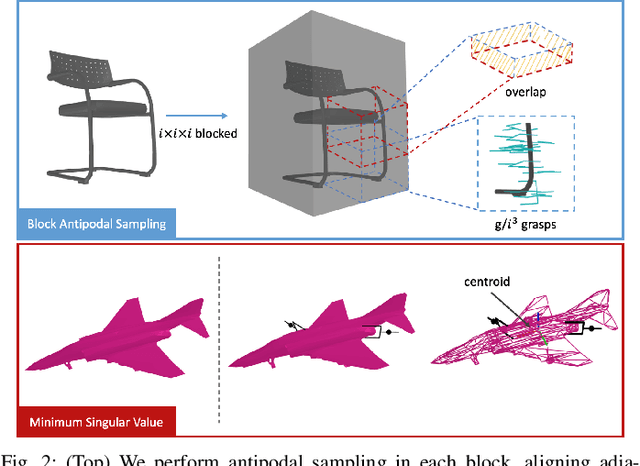

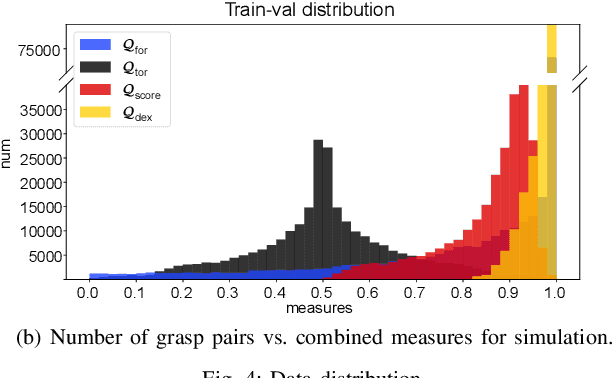
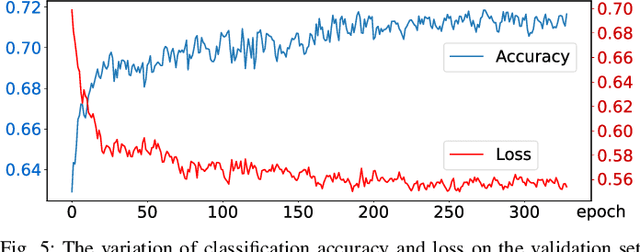
Abstract:In this paper, we introduce DA$^2$, the first large-scale dual-arm dexterity-aware dataset for the generation of optimal bimanual grasping pairs for arbitrary large objects. The dataset contains about 9M pairs of parallel-jaw grasps, generated from more than 6000 objects and each labeled with various grasp dexterity measures. In addition, we propose an end-to-end dual-arm grasp evaluation model trained on the rendered scenes from this dataset. We utilize the evaluation model as our baseline to show the value of this novel and nontrivial dataset by both online analysis and real robot experiments. All data and related code will be open-sourced at https://sites.google.com/view/da2dataset.
Relative Policy-Transition Optimization for Fast Policy Transfer
Jun 13, 2022


Abstract:We consider the problem of policy transfer between two Markov Decision Processes (MDPs). We introduce a lemma based on existing theoretical results in reinforcement learning (RL) to measure the relativity between two arbitrary MDPs, that is the difference between any two cumulative expected returns defined on different policies and environment dynamics. Based on this lemma, we propose two new algorithms referred to as Relative Policy Optimization (RPO) and Relative Transition Optimization (RTO), which can offer fast policy transfer and dynamics modeling, respectively. RPO updates the policy using the relative policy gradient to transfer the policy evaluated in one environment to maximize the return in another, while RTO updates the parameterized dynamics model (if there exists) using the relative transition gradient to reduce the gap between the dynamics of the two environments. Then, integrating the two algorithms offers the complete algorithm Relative Policy-Transition Optimization (RPTO), in which the policy interacts with the two environments simultaneously, such that data collections from two environments, policy and transition updates are completed in one closed loop to form a principled learning framework for policy transfer. We demonstrate the effectiveness of RPTO in OpenAI gym's classic control tasks by creating policy transfer problems via variant dynamics.
Explainable Hierarchical Imitation Learning for Robotic Drink Pouring
May 16, 2021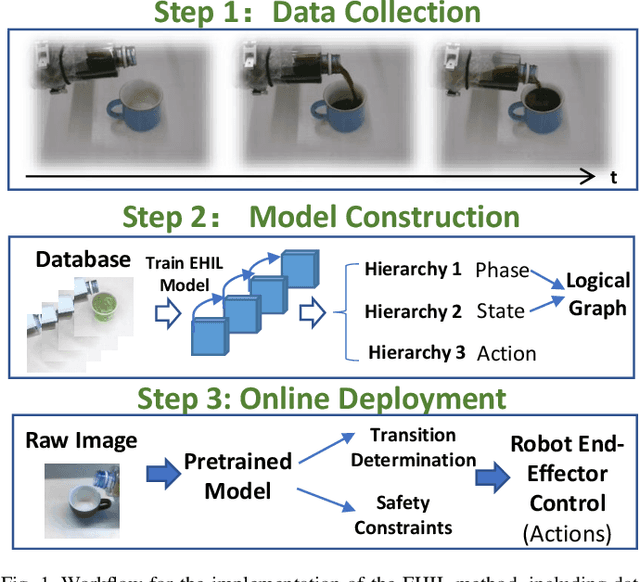
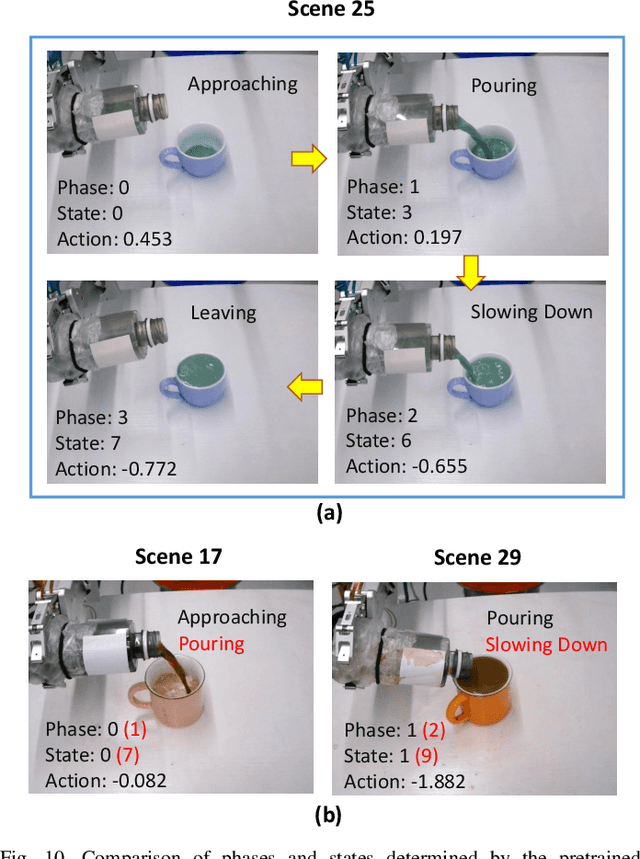
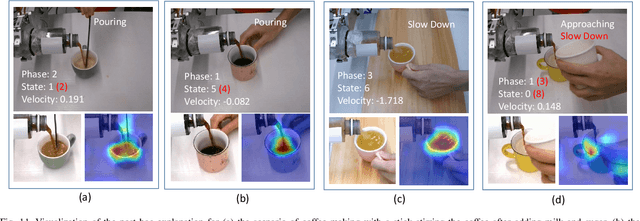
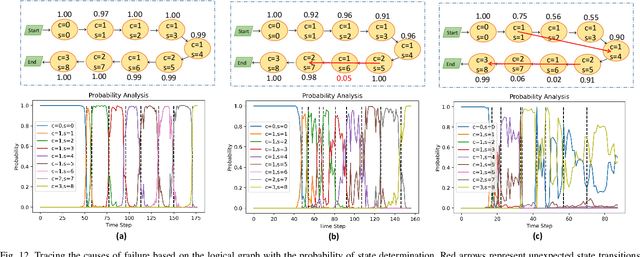
Abstract:To accurately pour drinks into various containers is an essential skill for service robots. However, drink pouring is a dynamic process and difficult to model. Traditional deep imitation learning techniques for implementing autonomous robotic pouring have an inherent black-box effect and require a large amount of demonstration data for model training. To address these issues, an Explainable Hierarchical Imitation Learning (EHIL) method is proposed in this paper such that a robot can learn high-level general knowledge and execute low-level actions across multiple drink pouring scenarios. Moreover, with EHIL, a logical graph can be constructed for task execution, through which the decision-making process for action generation can be made explainable to users and the causes of failure can be traced out. Based on the logical graph, the framework is manipulable to achieve different targets while the adaptability to unseen scenarios can be achieved in an explainable manner. A series of experiments have been conducted to verify the effectiveness of the proposed method. Results indicate that EHIL outperforms the traditional behavior cloning method in terms of success rate, adaptability, manipulability and explainability.
TLeague: A Framework for Competitive Self-Play based Distributed Multi-Agent Reinforcement Learning
Nov 30, 2020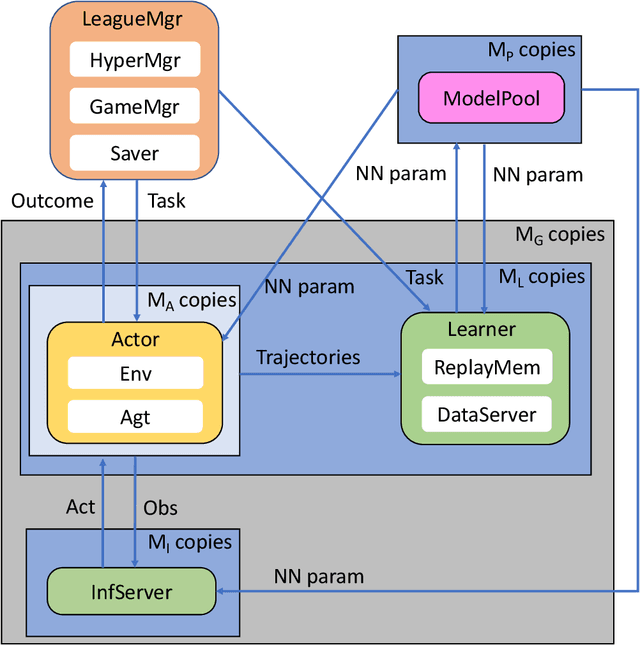

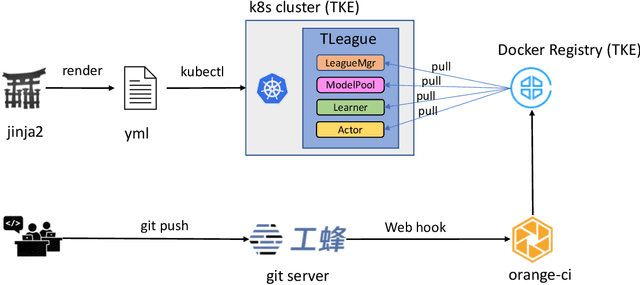
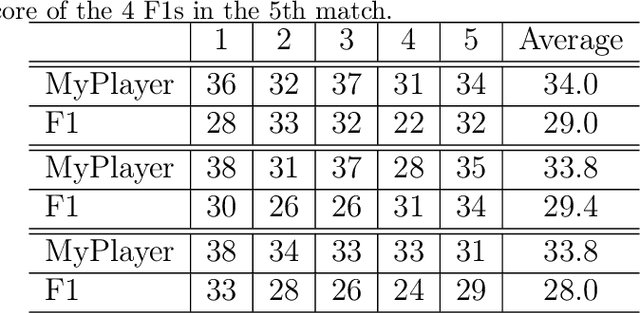
Abstract:Competitive Self-Play (CSP) based Multi-Agent Reinforcement Learning (MARL) has shown phenomenal breakthroughs recently. Strong AIs are achieved for several benchmarks, including Dota 2, Glory of Kings, Quake III, StarCraft II, to name a few. Despite the success, the MARL training is extremely data thirsty, requiring typically billions of (if not trillions of) frames be seen from the environment during training in order for learning a high performance agent. This poses non-trivial difficulties for researchers or engineers and prevents the application of MARL to a broader range of real-world problems. To address this issue, in this manuscript we describe a framework, referred to as TLeague, that aims at large-scale training and implements several main-stream CSP-MARL algorithms. The training can be deployed in either a single machine or a cluster of hybrid machines (CPUs and GPUs), where the standard Kubernetes is supported in a cloud native manner. TLeague achieves a high throughput and a reasonable scale-up when performing distributed training. Thanks to the modular design, it is also easy to extend for solving other multi-agent problems or implementing and verifying MARL algorithms. We present experiments over StarCraft II, ViZDoom and Pommerman to show the efficiency and effectiveness of TLeague. The code is open-sourced and available at https://github.com/tencent-ailab/tleague_projpage
 Add to Chrome
Add to Chrome Add to Firefox
Add to Firefox Add to Edge
Add to Edge